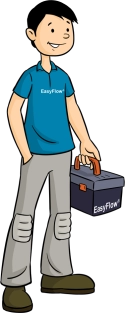- Home
- How to
- How to
- Services
- Services
- Maintenance Plan
- Location
- Guides
- Guides
- No Hot Water – Self help
- Unvented Water Heater
- Unvented Water Heater Faults
- G3 Building Regulations
- Thermal Store Water Heaters
- Thermal Store Faults
- Gledhill ElectraMate
- Gledhill PulsaCoil
- Gledhill Torrent
- Gledhill Stainless Lite
- OSO Unvented Heater
- MegaFlo – Heatrae Sadia
- Santon Premier Plus
- Albion
- Manco Riverstream and Powerstream
- Manco Gladiator & Stirling
- Telford Tempest
- Safety Considerations Unvented Cylinders
- Reduce Your Water Heating Bill
- Range Tribune
- About Us
- About us
- Forum
- Contact

-
Call Now
Specialists in Electric Hot Water Cylinders
Understanding the Parts of Your Unvented Cylinder
If you have an unvented cylinder in your home, you know just how much of a difference it can make in your life. You get mains pressure hot water out of every tap and don’t have to deal with the issues that arise all too often from vented cylinders. How familiar are you with the parts that make up your unvented cylinder? In this post, we’ll introduce some of the components that help your cylinder produce hot water and protect you.
Cylinder
The cylinder is the largest component and the most obvious. This insulated cylinder holds the water to be heated and also serves as the installation point for the other components that make the system work. The cylinder should be double-walled, with an internal steel surface covered by insulation, and then an external metal surface (and you can install an insulative jacket over this).
Immersion Heater
In electric unvented cylinders, immersion heaters are responsible for heating water. They’re located inside the cylinder and can only be serviced by qualified engineers.
Tundish
It’s a funny name, but the tundish serves a very serious purpose. In the event of an overpressure situation, it directs water out and down the drain so that it does not damage your home. It also provides a window to see water flowing (if you see water in the tundish, you need to call a plumber).
Pressure Relief Valve
The pressure relief valve is designed to open if the cylinder experiences an overpressure situation to release excess pressure.
Expansion Vessel
Because water cannot be compressed and it expands when heated, it needs somewhere to go when hot. The expansion vessel provides that. Note that some unvented cylinders use an internal bubble in place of an expansion vessel.
Cold Water Inlet
The cold-water inlet is where fresh water enters the cylinder from your home’s plumbing. There’s often a pressure-reducing valve located here.
Pressure Reducing Valve
The pressure-reducing valve does what you might expect it to do – it reduces mains pressure water to prevent damage to the cylinder.
Dip Tube
The dip tube runs from the top of the tank to the bottom and is responsible for carrying cold water into the tank from the cold-water inlet. Used on newer OSO Super SX unvented water cylinders. These cylinders require space above the cylinder, almost as much as the height of the cylinder, to remove the dip tube if there is a fault with the seal or the main valve block needs replacing. Unfortunately for the apartment owner, many Super SX cylinders sit on a supporting table above a washing machine. This then turns a reasonably straight forward job into one requiring the cylinder to be uninstalled, then lifted to the floor by two men before the job can start. The cylinder then needs to be reinstalled after the work has been completed. If there are issues with the o-ring slip seals, not as uncommon a problem as you would hope, the process has to be repeated
Check Valve
Water mustn’t flow back into the piping from the unvented cylinder. A check valve ensures a one-way flow of water and prevents backups from occurring.
Thermostat
The thermostat is usually attached to the cylinder itself. It allows you to adjust the water temperature up or down for comfort, safety, and financial savings. Sometimes thermostats trip and need to be reset
Turn to the Pros for Help
Are you experiencing issues with your unvented cylinder? While they’re highly reliable and much more efficient than old, vented styles, components can and will fail as your cylinder ages. When problems occur, make sure to work with a trusted professional. At EasyFlow, our engineers are G3 qualified, ensuring that they can service, repair, install, or replace your unvented cylinder safely. Get in touch today to schedule a consultation.
Iain, Nantwich
13 October 2025
Annual Service
Excellent service as always.. Highly recommendable.
Peter , Nantwich
16 September 2025
Annual Service
Very pleased with all aspects of the work completed by your knowledgeable staff.
Barry, Royton
13 June 2025
Replacement Valves
Tom, Manchester
20 May 2025
Replacement Valves
Raymond, Lancashire
1 May 2025
Annual Service
Vickie, Didsbury
10 April 2025
Annual Service
Raymond, Reddish
17 March 2025
No Hot Water
Brenda , Liverpool
12 February 2025
Installation
Gianfranco, Uk
18 February 2025
Annual Service
As always the serrvice was done efficiently and the surrounding area left clean and tidy.
Anne, Manchester
30 January 2025
Annual Service

© 2026 EasyFlow Water Limited. All rights reserved








Find out what our clients are saying about the services we provide
Click to view